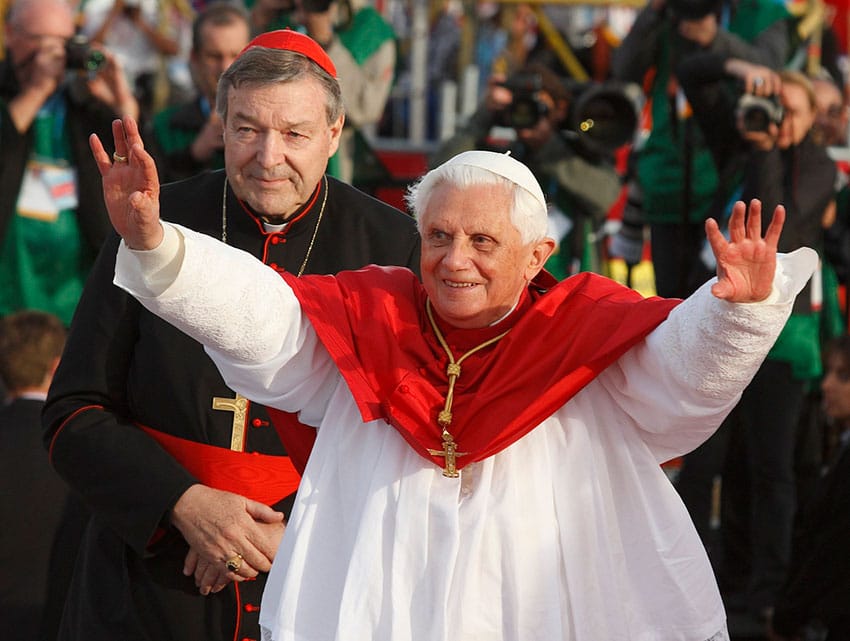
We can only admire Benedict’s achievements and cherish his memory
Pope Benedict was much loved, especially by young Catholics. Many seminarians admired and imitated him and were strengthened in their vocations by his example and teaching.
His enthusiasts were not fair weather friends but crucifixion Christians, faithful disciples of the ancient Catholic and apostolic tradition which has flowed down to us through the Second Vatican Council and St John Paul the Great.
I remember the excitement in St Peter’s Square when his election was announced, watching from the balcony the crowds running down the Via della Conciliazione towards the Basilica, the enthusiasm of the seminarians, some of whom I recognised as fellow Australians, the Swiss Guard and the Italian army contingent on parade, the bands and the two national anthems.
It was a time of bright promise, especially for the disciples of St John Paul the Great whose long reign even then was acknowledged as one of the high points in papal history, a fact attested by the extraordinary attendance at his funeral.
“And the end was spectacularly different from what was anticipated, especially in 2005. Who would have thought that the scholarly German pope, the embodiment of tradition, would have followed the obscure and lonely example of his late thirteenth century predecessor Celestine V who resigned the papacy in 1294.”
Pope Benedict regularly gave us wonderful teaching during his pontificate, which was marked by solid achievements such as his successful visits to the British and German parliaments, and the Australian high point of the World Youth Day in 2008. But the initial promise was never fully realised.
The regular criticism of the secularists and the occasional Islamic attacks were predictable, but the paedophilia crisis in the English-speaking countries was draining and the scandals such as the Vatileaks and the affair involving Paolo Gabriele the butler were embarrassing.
And the end was spectacularly different from what was anticipated, especially in 2005. Who would have thought that the scholarly German pope, the embodiment of tradition, would have followed the obscure and lonely example of his late thirteenth century predecessor Celestine V who resigned the papacy in 1294.
This was a dramatic break from nearly 2000 years of tradition, made possible by modern medicine, the consequent increasing longevity of the Popes, and the relentless 24-hours-a-day interest, and hostility in Benedict’s case, of the media in the Papacy and the Vatican.
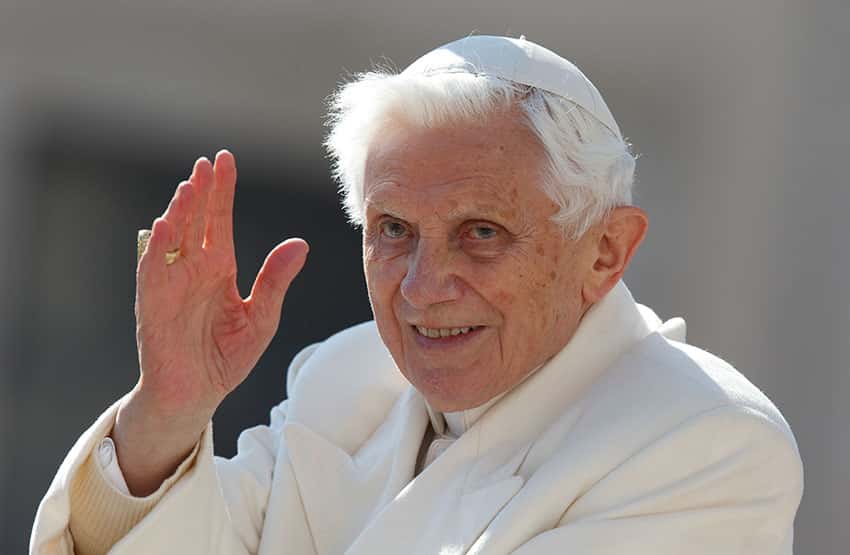
Authorities were aware all was not well financially and the Holy Father commissioned three Cardinals to prepare a secret report on financial and moral corruption in the Vatican.
This has never been published and Pope Benedict might have thought that his successor would be better equipped to clean up the situation.
I first encountered the Bavarian Cardinal Joseph Ratzinger, vigorous then, and still in his sixties, when in 1990 I was appointed a member of the Congregation for the Doctrine of the Faith, once known as the Inquisition.
It was founded in 1542 by Pope Paul III in the aftermath of the Protestant Reformation and its task is to the protect the apostolic tradition, to maintain the purity of doctrine.
“The proceedings were formal and hierarchical with the twenty five or so members seated in order of seniority around the Prefect, each one speaking to the topic in turn beginning with the Secretary of State.”
This work continues in every pontificate and under Pope Francis, to ensure that the faithful in the pews, the children in the schools and parishes are being taught what Jesus and the apostles taught.
Cardinal Ratzinger had been Archbishop of Munich when he was transferred by St John Paul the Great to become Prefect of the Congregation.
The nineties were a turning point in the history of the Church, and indeed in the history of freedom as the Communist Empire in Central and Eastern Europe had collapsed peacefully in 1989 due to the work of the Polish Pope John Paul, Lech Wałęsa, the Solidarity union leader, President Reagan and Prime Minister Margaret Thatcher in Britain.
One writer, Francis Fukuyama, brashly wrote of “The End of History”, of the final triumph of Western democracy and capitalism. Little did he know.
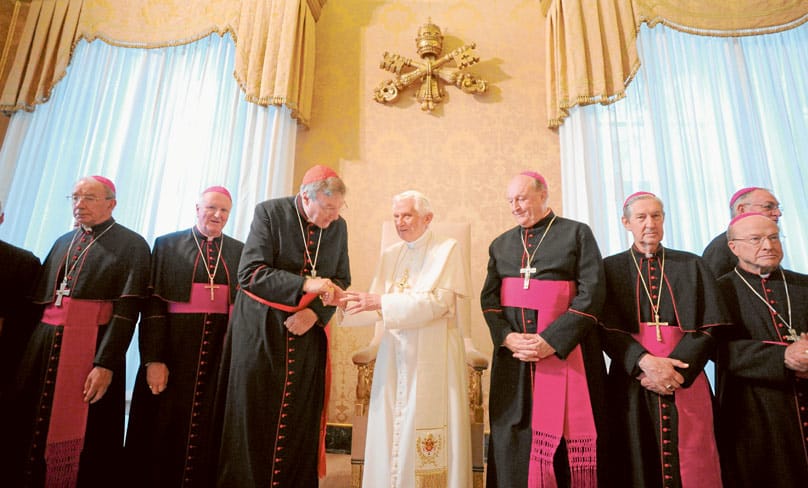
Roman members of the Congregation met each month but the Plenary or full membership from around the world only meet once a year.
The proceedings were formal and hierarchical with the twenty five or so members seated in order of seniority around the Prefect, each one speaking to the topic in turn beginning with the Secretary of State.
As the junior member I was not well placed to influence any debate, but listening to the others was a help in polishing up my interventions.
On one occasion the Cardinal started the discussion from the most junior member, probably to be a bit clearer on how much I had to say for myself!
“These performances were regularly brilliant, drawing on his vast knowledge and expressed in his elegant Italian.”
Some of the material discussed was quite demanding with the international membership often bringing contrasting points of view to the discussion.
As Prefect, Cardinal Ratzinger briefly introduced the discussion and always summed up the proceedings at the end, synthesising the discussion, analysing it and then setting out his conclusions.
These performances were regularly brilliant, drawing on his vast knowledge and expressed in his elegant Italian.
Benedict was a splendid linguist, in both ancient and modern European languages. He liked to speak English with me, estimating that his English was better than my Italian. I am not sure he was infallible on this point!
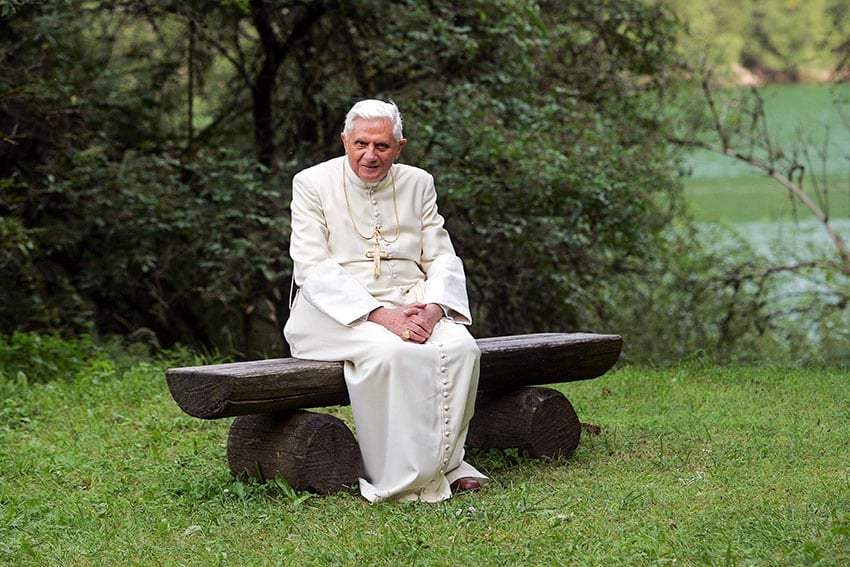
I was told that when he was in Rome the Holy Father did not dally over meals, quickly moving on to his next round of work.
When he stayed at Cathedral House for World Youth Day he varied this practice, staying longer and joining the conversation lightheartedly on a variety of topics.
He was always pleased to intervene with a correction or clarification when dealing with any imprecision or exaggeration on my part. And here he was on solid ground.
One piece of mythology should be rejected. Pope Benedict did not smoke and he did not walk up and down the Cathedral balcony in the evening behind the screens with a cigarette. This was probably one of his guards breaking protocol during the long hours of the night.
“For a few days in July 2008 Sydney was briefly at the heart of the Universal Church when Pope Benedict visited us for the World Youth Day.”
Neither did the Holy Father have a cat or cats in or around his apartment on the top floor of the Apostolic Palace in the Vatican.
For a few days in July 2008 Sydney was briefly at the heart of the Universal Church when Pope Benedict visited us for the World Youth Day.
His ‘Alitalia’ plane with few passengers and extra fuel flew directly from Rome to Darwin, then close to the limit for a non-stop flight, and he rested from the long trip for a few days at Kenthurst, the Opus Dei retreat centre north of Sydney.
He told me that after the heat of Rome, his time there with clear days and colder evenings was like Heaven. The gardens are beautiful and the house was spick and span.
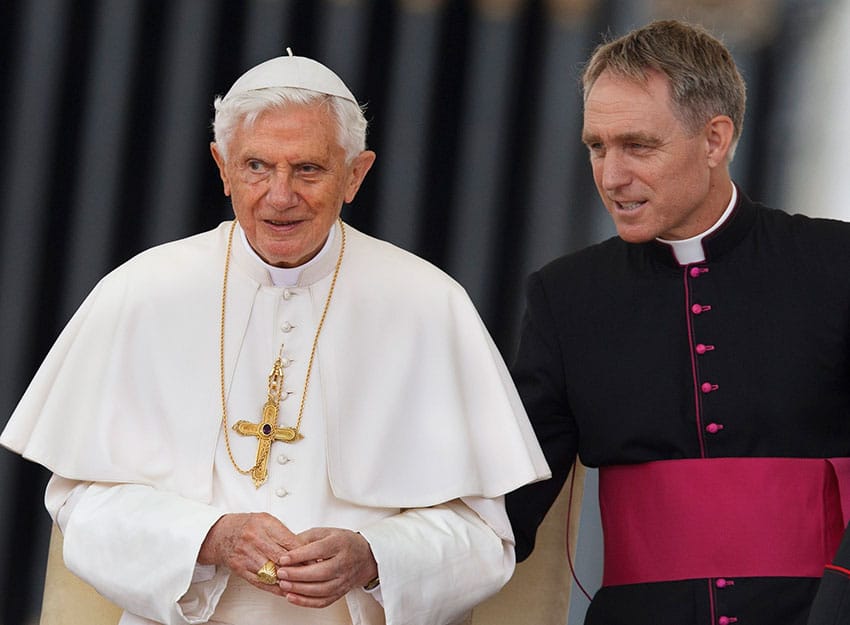
When I visited him in late October 2020 he recounted how he had dipped into a German biography of the Opus Dei founder, St Josemaria Escriva, which happened to be in the library!
I had always been confident that WYD would be well organised (we Australians are capable of such things) and recognised that the spiritual dimension would present the greatest challenge.
The leadership team realised this and worked effectively to place Christ and His teachings, prayer, adoration, and the sacraments at the centre of the pilgrims’ attention. Tens of thousands of young adults went to confession.
Pope Benedict had no vocation to be a pop star, was not noisy or exuberant and led the way in demonstrating that WYD was a religious gathering. The young people recognised what we were proposing and many responded.
“Standing on the bow of the ferry with Pope Benedict as we travelled up the Harbour which was at its best on a calm and perfect day.”
When I was in gaol I received letters from people of many parts of the globe expressing their gratitude for this gathering, for the way their faith was strengthened, and their vocations perceived or received.
Many beautiful memories jostle around in my memory. Standing on the bow of the ferry with Pope Benedict as we travelled up the Harbour which was at its best on a calm and perfect day.
The Way of the Cross has never been reenacted better than in Sydney, although the cloud of smoke which rose as Christ died, was not a wonderful special effect but due to the fact that a generator caught fire at the critical moment.
At the final Mass after Communion I could hear the birds singing, so profound was the prayerful silence.
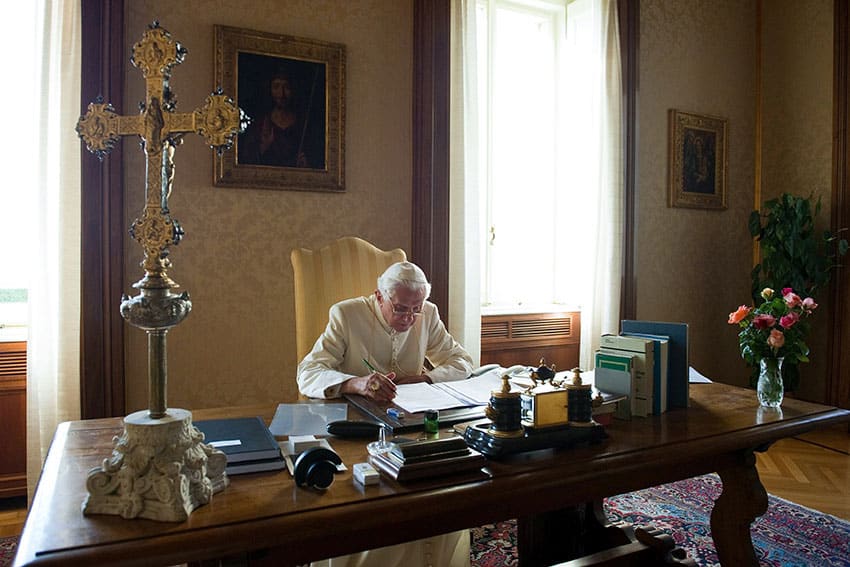
The Holy Father’s private Mass in the Cathedral House chapel for a number of victims of sexual abuse, men and women, was deeply appreciated, as was his public declaration that he was sorry for the crimes and the damage.
Pope Benedict was the effective human centrepiece in one of the largest public celebrations in Australian History.
350-400,000 attended the final Mass and more overseas visitors came to WYD than came from overseas for the Beijing Olympics soon afterwards.
Like many Germans the Holy Father had a strong sympathy for the English-speaking world, understanding our situation and the importance of an accurate and non-ideological English translation of the Catechism of the Catholic Church, a task he entrusted to the-then Archbishop of Hobart, Eric D’Arcy. Similarly, he strongly supported the Mass translation, we now use in the English-speaking world, of the Roman Missal. All this was providential.
“He did not have an easy life in the Church turmoil which followed the Second Vatican Council, becoming one of the formidable group of leaders who surrounded Pope John Paul II in the Curia and then came to lead the Church in challenging times.”
Joseph Ratzinger was born into a Bavarian family of strong faith before the Second World War. He was conscripted into the Hitler Youth and the German army, became a seminarian and a priest with his brother George.
Misleadingly dubbed later as “Der Panzer Kardinal”, he was a gentleman scholar of the old school, learned and courteous, whom the Australian people saw as he really was.
He did not have an easy life in the Church turmoil which followed the Second Vatican Council, becoming one of the formidable group of leaders who surrounded Pope John Paul II in the Curia and then came to lead the Church in challenging times.
We acknowledge Pope Benedict’s achievement, admire his contribution, and cherish his memory. May he rest in the peace he has merited.
Joining Cardinal Pell in paying tribute to Pope Emeritus Benedict XVI for the special commemorative magazine Witness to God’s Love were Archbishop Anthony Fisher OP, Prof Tracey Rowland, George Weigel, Anna Krohn and Russell Shaw.
Copies of Witness to God’s Love can be ordered from The Catholic Weekly by emailing: [email protected]
Related Articles:
